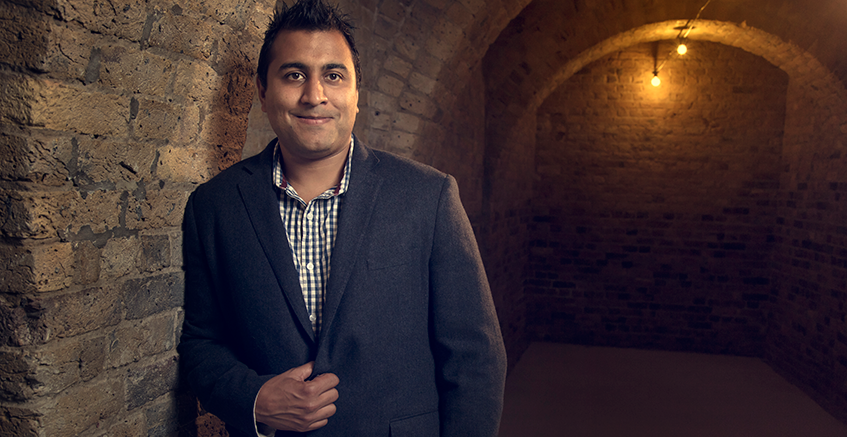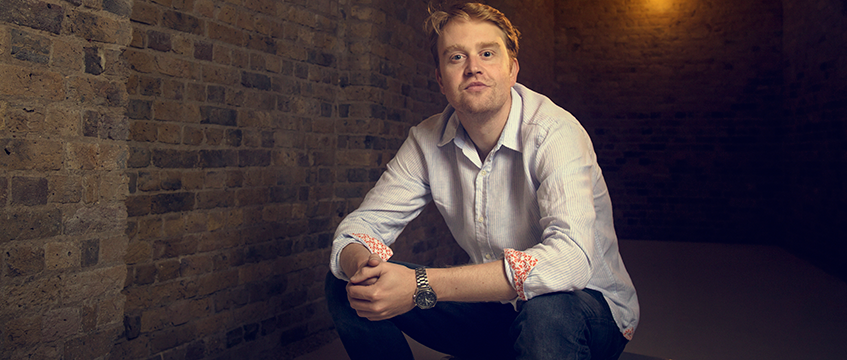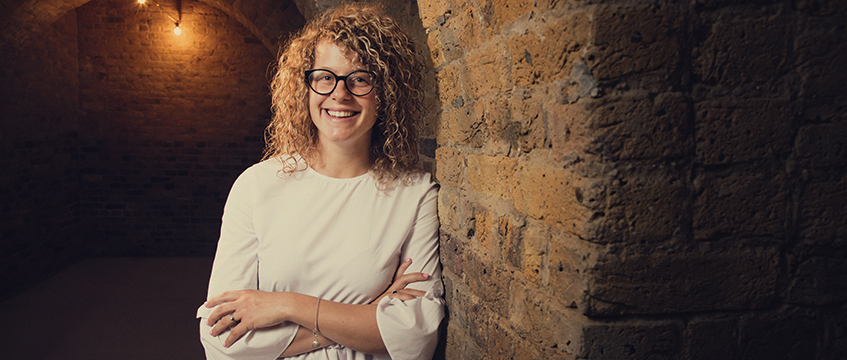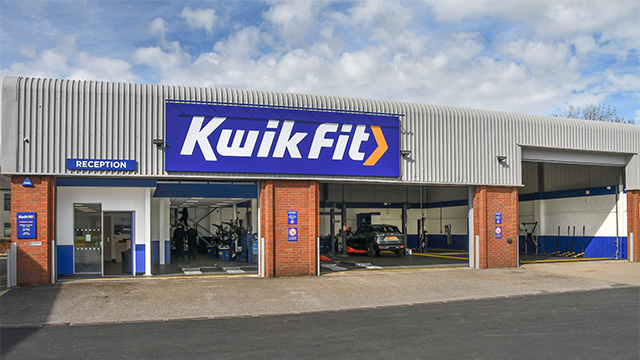Over the past five years, EG has been engaging with and highlighting some of the brightest next big things in the built environment. Through our Rising Stars awards project and Future Leaders training programme we have amassed an alumnus of close to 100 potential new leaders of real estate. After a year like never before, EG asked the next generation three questions about the future of the industry:
- What the outlook for real estate in 2021 and beyond is
- What will be the biggest catalyst for change in the sector
- Who (or what) will be the most influential in real estate in the next five years
Here is what they had to say. A unique look into how to future-proof your business for success.
Josh Myerson, head of rating, Montagu Evans

OUTLOOK
Short-term uncertainty followed quickly by rapid and fundamental transformation. It’s clear the real estate landscape is changing. Perhaps that change was already endemic, but Covid-19 has been a dramatic catalyst across the industry. There may be obvious short-term winners and losers – logistics v high street retail – but our focus now is supporting these sectors through the upcoming period of change. The real estate sector should play a pivotal role in bringing forward long-term positive growth.
CATALYST
In the here and now, it’s undoubtedly Covid-19. But looking ahead, it will continue to be technology disrupting the mainstream. Over the past few years, we’ve seen the rise of really innovative solutions that sought to tackle discrete challenges in real estate: data, connectivity, sustainability, and so on. Now is the time for innovation to pervade the core of the industry – how we value real estate, how we manage real estate, how we buy and sell real estate and how we create social value. Property is so often cited as a people business, but we should still look for ways that new tech can cover day-to-day work and free up our teams for the areas where they can add most value.
MOST INFLUENTIAL
It might be a truism, but the graduates and young entrepreneurs of today will be the leaders and placemakers of tomorrow. They need more voice now so they can set the agenda for the change we know is coming.
Rajeev Nayyar, managing director, Fixflo

OUTLOOK
Leaving aside the macro drivers of Brexit and a potential trade war between the US and China, the biggest changes in real estate will likely be seen in tech adoption by the sector. Social distancing and public health measures turbocharged both digitisation and digitalisation in the sector, squeezing years of progress into the second half of 2020. As businesses switched to complete or hybrid remote working, legacy on-site systems have shown their shortcomings.
This year we will see this digital transformation continues with an enhanced application of IoT technologies. IoT tech will facilitate the return of corporate occupiers to city centres and give designers the tools to create smart, safe workspaces.
CATALYST
Commercial occupiers demanding far greater flexibility could overhaul the design of leases going forward. Over recent years, we saw commercial lease terms drop significantly. We are still in the pandemic, and there could be more lockdown restrictions before we are out of the woods. Businesses need flexibility in both lease terms and space usage, and commercial landlords will have to offer the desired level of flexibility to remain desirable. With more and more companies adopting various forms of remote working, workspaces may need to be reimagined as desk spaces and be leased on a per-day basis.
Widespread hybrid working could also mean that a residential property’s proximity to workplaces will no longer be a key driver in buying and renting decisions. With less frequent commutes, residential occupiers will prioritise other factors such as access to green spaces or leisure facilities.
MOST INFLUENTIAL
Over the next five years, the most critical person for property professionals is a competent and commercial lawyer. We are going through periods of rapid change both in terms of the macro environment, and the way physical assets are used and leased. A top-drawer lawyer who understands the regulatory and legal developments, and the changing market norms will be able to come up with creative and viable solutions against a backdrop of uncertainty. It’s in these times of great changes that the best lawyers more than earn their fees.
William Newton, president and managing director, WiredScore

OUTLOOK
I’m a bull on good real estate and a bear on bad real estate. People want to work and live in places that inspire them, and they’re willing to pay a premium for that. But they now have a real alternative to drab, unproductive, unsustainable, unhealthy offices. Not just more higher-end buildings, but their own homes. Customer-centric real estate will thrive, unconscious real estate will wither on the vine.
CATALYST
Three trends are driving the industry. Firstly, the way that we work is altering, necessitating a change to our workplaces. Secondly, a greater understanding of the dangers of climate change is shifting behaviours and expectations. Thirdly, our use of technology in our personal lives is driving demand for more data and better services in our professional lives. These factors combined create a compelling need for smarter buildings.
MOST INFLUENTIAL
Anyone who puts customers first and creates buildings and products focused on their needs, will not only succeed, but be critical to the future of the industry.
Rupert Parker, founder and chief executive, Building Passport

OUTLOOK
I consider myself an optimist but I find it hard to see a rosy horizon for the real estate market while the economy shank by more than 10% last year and unemployment is predicted to peak at 7.5% this year. With the government either cutting spending, raising taxes or increasing borrowing we are going to need something pretty spectacular to rouse the market.
The promise of life returning to normal at some point in 2021 will not, in my opinion, immediately bring back the pre-Covid era of bustling working districts due to the fact that working from home has become the new normal and it is likely that most people will want to spend at least a few days at home – especially if they have followed the new trend of rural relocation. Where we may notice a marked difference is in the leisure sector, with pent-up demand for socialising bringing a torrent of business to the sector.
Conversely, I think the real estate technology market finds itself in a favourable position as it develops solutions to address the efficiencies being demanded by a sector under the most financial pressure in a decade. The current fundraising environment is also aiding these technology companies as investors seek opportunities from high-growth sectors.
CATALYST
The past nine months have been instrumental in changing consumer preferences. Take my parents for example. In 2019 they were nervous to buy anything online – now they are almost daily Amazon Prime customers. The catalyst for this change is the external factor of technological improvements and enhanced telecommunications. This trend will continue and may unfortunately lead to the disappearance of more companies such as Debenhams and Arcadia.
MOST INFLUENTIAL
From the financial opportunity perspective – and due to the changing consumer trends outlined above – the most powerful people to know in the real estate world will be those owning and controlling distribution channels and hubs for online goods.
Charlie Pool, founder, Stowga

OUTLOOK
I think we will see some interesting times ahead of us where landlords, investors and developers will have to get creative.
I can’t see us ever again having as much need for office space as we did pre-pandemic. Even once the pandemic is long gone the working from home trend won’t be. This shift was happening anyway among smaller companies and has now spread to every company. There simply isn’t the need for everyone to be in the office every day.
So what happens to that excess space? If it can be it will be turned into residential because that’s where the highest rents/values are, but a lot of office isn’t good for that. If it can’t be residential then we will see creative uses. Most likely is some sort of retail use. Retail has been shifting online for years and we have seen more retail become experiential. Top retailers see the store as a support show to e-commerce, so it’s best not to have the store too cluttered. More open, calm spaces that are not rammed with products to sell might be a good use of space.
The real winner is industrial but that is changing too. I expect to see higher demand for urban locations and I am sure we will see a lot of industrial retail closing down and becoming pure industrial. I expect there will be a premium on mixed-use capacity, particularly in London.
CATALYST
I can’t imagine there will be more of a catalyst than Covid, but perhaps a huge environmental shift will come if Boris and Biden follow through with all their green investment rhetoric. If that does happen there will be big investment in greening cities – a focus on air quality, energy efficiency and reduced traffic.
MOST INFLUENTIAL
Probably whoever heads up Amazon’s real estate, but that’s not a very interesting answer. A more interesting candidate might be Oscar Rodriguez, who is director of policy at UK Urban AgriTech. I think urban agriculture may possibly be the biggest change we will see in cities over the medium to long term.
Manreet Randhawa, director, Nuveen Real Estate

OUTLOOK
Real estate markets are constantly evolving to meet the ever-changing needs of society. The desire for flexible shopping, living and working has only intensified during the pandemic, so I’m excited to see how the landscape morphs to cater for changing consumer desires.
I’m hopeful that the sectors that have suffered the most, such as retail and hospitality, begin to recover in 2021. Although 2020 was tough, I believe some very positive changes will be born from these extremely challenging times.
CATALYST
The change in human behaviour will be the biggest catalyst, as the pandemic has fundamentally shifted the inner psyche of people in varying ways. Real estate will need to reflect upon evolving priorities, such as an increasing demand for wellness and contactless convenience.
MOST INFLUENTIAL
Farmers and food producers are some of the most important people in our futures. The world population is estimated to grow by at least another 400m, which will only increase the burden on this planet. Climate change and crop failures will sadly become more frequent, so I think the most useful people to know will be those who are exploring innovative ways to overcome challenges around sustainable production while minimising the carbon footprint of agriculture. Perhaps micro-farming will become commonplace in our cities one day.
Mark Reading, legal director, Mishcon de Reya

OUTLOOK
2021 will undoubtedly see a shift towards a hub-and-spoke model in the office sector. Mark Dixon of IWG predicted this “city to suburb” shift many years (if not decades) ago, but the impact of Covid-19 seems to have really brought this issue to the fore. Companies are listening to what their staff are saying in terms of commute times and flexibility of location and are taking decisive steps to implement changes that address these issues.
CATALYST
The death knell for the Landlord and Tenant Act 1954 seems to have been sounded by the government’s recent comment that the Act “does not reflect current economic conditions”. The Franses decision, delivered almost two years to the day prior to the government’s recent comment, represented one of most significant changes in the commercial landlord and tenant arena in more than 60 years. But if the government has its way, Franses will be only the tip of the iceberg. However, the key question the government needs to carefully reflect on is whether widespread reform in this area, at a time of unprecedented economic uncertainty, is really the best way in which to address perceived shortcomings in the current regime.
MOST INFLUENTIAL
Over the past five years, the property industry has finally begun to genuinely embrace diversity of background, thought and expression in its people. Those in the industry who have done so are already reaping the personal and financial rewards of this. But a dissenting contingent certainly remains. Over the coming five years, those who acknowledge the “power in their people” will thrive. They will achieve this through investment and self-reflection to ensure that the best talent available is provided with the support and guidance needed to access and succeed in the industry and that their staff body genuinely represents the communities it serves and is embedded in these.
Tom Redmayne, North America managing director, WiredScore

OUTLOOK
The way the industry thinks about designing buildings is going to change. Previously, for all but the most forward-thinking developers, technology and health and wellbeing aspects of a building’s design were often an afterthought, tagged on towards the end of the build process. The next-generation building will see these aspects become key early design influences that form the platform to enable the way we will want to live and work.
CATALYST
Covid-19 has shown us that we do not have to work in an office to run our businesses successfully, as technology improvements mean remote working at scale is now possible. Companies are no longer tied to spending a huge amount of money on an office to be able to exist and grow. Instead, they now have choice. It is up to the industry to acknowledge that their customers will only have offices if the environment it offers provides better value for money, compared to the new alternative options. For those who are willing to invest in creating environments that help drive productivity, this is a fantastic opportunity, but for those who are unwilling to change, the risk of obsolescence is high.
MOST INFLUENTIAL
There has been a strong focus over the past 12 months on the lack of diversity in the real estate industry. I hope and expect that this will drive change and open up opportunities in real estate to people from a much wider variety of backgrounds. I am excited to see this lead to a new generation of future leaders that are not constrained by the previous status quo and are focused on delivering buildings and cities that will be relevant, aspirational and stand the test of time.
James Rosenfeld, principal, Blackstone

OUTLOOK
The pandemic has both accelerated and disrupted real estate trends with areas showing strength while others remain under pressure. Significant intuitional capital continues to focus on exposure to real estate, in part given the lower for longer yield environment.
E-commerce continues to thrive globally as it adapts to changing consumer preferences which, in turn, has driven strong demand for last-mile distribution centres. Logistics remains Blackstone’s highest conviction theme and a sector which I believe will continue to grow.
CATALYST
The importance of sustainable investing and the way in which businesses approach ESG will have a profound effect on the industry and its future. ESG has been an integral part of Blackstone’s investment process for over a decade and we continue to build upon our existing initiatives in order to create a more sustainable future.
MOST INFLUENTIAL
Young people. Real estate is being transformed by changes in the way younger people want to work, shop and live. Several of our investments in recent years, including The Office Group, Mileway and iQ Student Accommodation, have been focused on capturing demand created by these changes. Over the next five years it will be important to stay close to the shifts in behaviour in order to find new and compelling investment opportunities.
Michelle Rothwell, founder, Watch This Space

OUTLOOK
As a business we are focusing on design, transforming ordinary spaces into amazing places and creating developments to make people smile. Yes, 2020 threw us all a curve ball, but more than ever it made us reflect and focus on the importance of place and what makes us productive. We’re full speed ahead into 2021 feeling positive.
CATALYST
Changes in employee attitudes to their live work balance and the knock-on effect of this to the design of the office and of homes.
MOST INFLUENTIAL
In the property world: architects and designers. Let’s create some inspiring user-friendly places that stand out from the crowd and make people say “wow”.
To send feedback, e-mail samantha.mcclary@egi.co.uk or tweet @samanthamcclary or @estatesgazette











